JAMA:北奥会期间空气污染水平的改变和心血管疾病关联标记物变化有关
2012-05-19 EurekAlert! EurekAlert!
芝加哥 – 据5月16日刊《美国医学会杂志》JAMA上的一项研究披露,在2008年北京奥运会期间,空气污染的变化与全身炎症及血栓形成(血块形成)的生物性标记物的变化以及与健康年轻人心血管生理的检测指标的变化有关;该期杂志是有关全球卫生的专刊。 根据文章的背景资料:“空气污染是心血管疾病(CVD)的一个风险因子,但人们对空气污染导致CVD的机制则不甚了解。具有相关生物性标记物的假定的机制包括全身炎
芝加哥 – 据5月16日刊《美国医学会杂志》JAMA上的一项研究披露,在2008年北京奥运会期间,空气污染的变化与全身炎症及血栓形成(血块形成)的生物性标记物的变化以及与健康年轻人心血管生理的检测指标的变化有关;该期杂志是有关全球卫生的专刊。
根据文章的背景资料:“空气污染是心血管疾病(CVD)的一个风险因子,但人们对空气污染导致CVD的机制则不甚了解。具有相关生物性标记物的假定的机制包括全身炎症及血栓形成或内皮[衬在体内心脏和某些血管及空腔的细胞薄层]功能障碍。”“作为主办2008年奥林匹克运动会的一个条件,中国政府同意为奥林匹克运动会及之后的残疾人奥运会暂时且大幅地改善北京的空气质量。这种情况提供了一个应用一种准实验设计的独特的机会,在这一实验设计中,接触及生物性标记物可在基线(奥运会前的水平)时进行测量,接着在污染水平改变时(奥运会时)进行测量,并在之后的预计重新恢复到基线时后(奥运会后)再一次进行测量。”
纽约罗切斯特大学的David Q. Rich, Sc.D.及其同事开展了一项研究,旨在确定与CVD病理生理通路(全身炎症和血栓形成的生物性标记物、心率及血压)有关的标记物是否对空气污染的变化敏感。研究人员每日都对环境中的空气污染物进行检测,他们还在2008年奥运会(6月2日至10月30日)之前、之中及之后对125名健康的年轻人进行了不同的生物性标记物和其它指标(心率、血压)的检测。检测了包括那些与全身炎症(纤维蛋白原、C-反应蛋白[CRP]、白细胞[WBC]计数)和血栓形成或内皮功能障碍(血小板激活标记物P-选择素[sCD62P]及可溶性CD40 配体 [sCD40L]以及黏附性内皮糖蛋白冯?维勒布兰德因子)有关的的生物性标记物。
从奥运会之前至奥运会期间,颗粒性及气态污染物浓度有了大幅的降低(-13%至-60%)。从奥运会之前至奥运会期间,二氧化硫(-60%)、一氧化碳(-48%)、二氧化氮(-43%)、元素碳(-36%)、PM2.5的(-27%)、有机碳(-22%)、硫酸盐(-13%)的平均浓度都有所降低。文章的作者写道:“相比之下,臭氧浓度则有所增加(24%)。从奥运会期间至奥运会之后,所有污染物的浓度总体上有了大幅的增加(21%至197%),但臭氧(-61%)和硫酸盐(-47%)除外。”
研究人员观察到,SCD62P浓度(减少了34%)和冯?维勒布兰德因子浓度(减少了13.1%)出现了具有统计学意义的显著改善。其它结果的改变在校正后进行多重比较时没有统计学上的显著性。在污染物浓度增加的奥运会之后,大多数的结果与奥运会前的水平近似,但只有sCD62P和收缩压与奥运会期间相比有了明显的恶化。 “CRP的高于检测限度值部分从奥运会之前的55%下降至奥运会期间的46%,并在奥运会之后进一步下降至36%。污染物浓度的四分位间距范围的增加始终与纤维蛋白原、冯?维勒布兰德因子、心率、sCD62P和SCD40L浓度的具有统计学意义的增加有关。”
“尽管这些发现具有不确定的临床意义,但这一研究给人们提供了支持空气污染可能是CVD的一个全球性风险因子这一论点的准实验、机制性的数据。”
社论:中国空气质量的两难处境 - 经济增长与环境保护的协调
波士顿市哈佛公共卫生学院的Francesca Dominici, Ph.D.和 Murray A. Mittleman, M.D., Dr.P.H.撰写了一则伴随的社论: “像许多新兴工业国家一样,中国面临的两难处境是如何协调快速的经济增长与环境保护。”
“在最近几十年中,中国已经实现了工业化和城市化。然而,中国在维护城市空气质量上一直不甚成功。在中国,有数个因素挑战着空气污染控制措施的执行:严重依赖煤作为主要的供热系统,特别是在受到补助的住房中;缺乏以较慢增长换取较少污染的政治奖励;经济因素:大多数的中国工厂和发电厂的经营利润非常薄,且对污染的罚款一般也低于控制排放的成本;以及从无处不在的建筑工地至该国车辆总数的快速扩大这样的经济景观的转变。如果中国和其它亚洲国家的空气污染无法得到控制的话,它会扩大到其它的大陆。一则由Lin等人所做的最近的研究给人们提供了令人信服的证据,即亚州国家的排放可能占了多达美国地面污染的20%。干净的空气是一个共享的全球资源。为了促进全球卫生而维护空气质量是人们的共同利益。”

doi:10.1001/jama.2012.3488
PMC:
PMID:
Association Between Changes in Air Pollution Levels During the Beijing Olympics and Biomarkers of Inflammation and Thrombosis in Healthy Young AdultsAir Pollution, Inflammation, and Thrombosis
David Q. Rich, ScD; Howard M. Kipen, MD, MPH; Wei Huang, ScD; Guangfa Wang, MD; Yuedan Wang, PhD; Ping Zhu, MD; Pamela Ohman-Strickland, PhD; Min Hu, PhD; Claire Philipp, MD; Scott R. Diehl, PhD; Shou-En Lu, PhD; Jian Tong, MS; Jicheng Gong, PhD; Duncan Thomas, PhD; Tong Zhu, PhD; Junfeng (Jim) Zhang, PhD
Context Air pollution is a risk factor for cardiovascular diseases (CVD), but the underlying biological mechanisms are not well understood. Objective To determine whether markers related to CVD pathophysiological pathways (biomarkers for systemic inflammation and thrombosis, heart rate, and blood pressure) are sensitive to changes in air pollution. Design, Setting, and Participants Using a quasi-experimental opportunity offered by greatly restricted air pollution emissions during the Beijing Olympics, we measured pollutants daily and the outcomes listed below in 125 healthy young adults before, during, and after the 2008 Olympics (June 2-October 30). We used linear mixed-effects models to estimate the improvement in outcome levels during the Olympics and the anticipated reversal of outcome levels after pollution controls ended to determine whether changes in outcome levels were associated with changes in pollutant concentrations. Main Outcome Measures C-reactive protein (CRP), fibrinogen, von Willebrand factor, soluble CD40 ligand (sCD40L), soluble P-selectin (sCD62P) concentrations; white blood cell count (WBC); heart rate; and blood pressure. Results Concentrations of particulate and gaseous pollutants decreased substantially (−13% to −60%) from the pre-Olympic period to the during-Olympic period. Using 2-sided tests conducted at the .003 level, we observed statistically significant improvements in sCD62P levels by −34.0% (95% CI, −38.4% to −29.2%; P < .001) from a pre-Olympic mean of 6.29 ng/mL to a during-Olympic mean of 4.16 ng/mL and von Willebrand factor by −13.1% (95% CI, −18.6% to −7.5%; P < .001) from 106.4% to 92.6%. After adjustments for multiple comparisons, changes in the other outcomes were not statistically significant. In the post-Olympic period when pollutant concentrations increased, most outcomes approximated pre-Olympic levels, but only sCD62P and systolic blood pressure were significantly worsened from the during-Olympic period. The fraction of above-detection-limit values for CRP (percentage ≥ 0.3 mg/L) was reduced from 55% in the pre-Olympic period to 46% in the during-Olympic period and reduced further to 36% in the post-Olympic period. Interquartile range increases in pollutant concentrations were consistently associated with statistically significant increases in fibrinogen, von Willebrand factor, heart rate, sCD62P, and sCD40L concentrations. Conclusions Changes in air pollution levels during the Beijing Olympics were associated with acute changes in biomarkers of inflammation and thrombosis and measures of cardiovascular physiology in healthy young persons. These findings are of uncertain clinical significance.

doi:10.1001/jama.2012.4601
PMC:
PMID:
China's Air Quality Dilemma: Reconciling Economic Growth With Environmental ProtectionEconomic Growth vs Environmental Protection
Francesca Dominici, PhD; Murray A. Mittleman, MD, DrPH
Before 2008, concentrations of air pollutants in the city of Beijing, China, site of the 2008 Olympic Games, far exceeded acceptable standards, which caused serious concerns in the international community about the health and performance of Olympic athletes. To ensure acceptable air quality during the Olympics (held from August 8-24) and the Paralympics (held from September 6-16), the Chinese government launched a series of aggressive measures to reduce pollutant emissions.1 - 3 To reduce industrial emissions, the operations of combustion facilities were restricted in smelters, cement plants, power plants, nonattainment boilers, and construction and petro-chemical industries. To reduce traffic emissions, certain vehicles and trucks were banned, 70% of government-owned vehicles were kept off the streets, and other vehicles could travel through the city only on alternating days.3 In this issue of JAMA, in a study of the relationship between air pollutants and biomarkers of inflammation and thrombosis in 125 medical students, before, during, and after the Olympics, Rich et al4 report substantial reductions in the mean concentration of sulfur dioxide (−60%), carbon monoxide (−48%), nitrogen dioxide (−43%), elemental carbon (−36%), fine particles (particulate matter ≤2.5 μm in aerodynamic diameter [PM2 · 5]; −27%), ozone (−22%), and sulfate (−13%). These changes in air quality were accompanied by statistically significant improvements in biomarkers related to platelet adhesion and activation including a 34.0% decrease in P-selectin (sCD62P) and a 13.1% decrease in von Willebrand factor during the period of the Olympics that returned toward baseline after the air pollution controls were removed.
本网站所有内容来源注明为“梅斯医学”或“MedSci原创”的文字、图片和音视频资料,版权均属于梅斯医学所有。非经授权,任何媒体、网站或个人不得转载,授权转载时须注明来源为“梅斯医学”。其它来源的文章系转载文章,或“梅斯号”自媒体发布的文章,仅系出于传递更多信息之目的,本站仅负责审核内容合规,其内容不代表本站立场,本站不负责内容的准确性和版权。如果存在侵权、或不希望被转载的媒体或个人可与我们联系,我们将立即进行删除处理。
在此留言
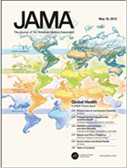




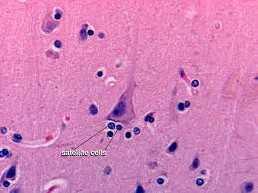
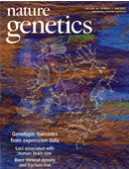
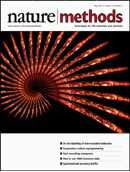
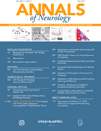
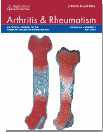




#标记物#
58
#污染#
74
#血管疾病#
54